“What is the body? That shadow of a shadow of your love, that somehow contains the entire universe.” ~ Rumi
Do you zone out in the hair dresser’s chair as tingles dance into a crown toward the top of your head? Do you love to stroke textures and maybe even more love the sounds made in the process? These are just a couple of examples of how triggers soothe and give some of us immense pleasure. Not everyone feels these or maybe doesn’t feel them to the extent they are noticeable. Yet, some of us bliss out like the bears in the photo below. Years ago I had a boyfriend who loved to brush my long red hair and I loved it just as much. I imagine he would have been in the ASMR category. Primates and other animals groom each other not only for cleanliness but for the pleasure, social reciprocation, and very likely head tingles (ASMR).
We all like to feel good. For the past few years I have focused a good part of my palmistry research on looking for and studying aspects of our hands that relate to primal instincts that we no longer need for survival and well being. I also have been looking at features that relate to sensations such as thrills and our sense of balance and space. People that love experiences like roller coasters in comparison to those that despise them, for example.
Studies have shown that the human brain is shrinking based on the fact that more of it is used for social and cultural aspects and less for survival in the wild. Parts of the brain that are no longer used have shrunk away yet our hands as instruments and tools have remained very similar in structure in the upright walking human. Since palmists associate much of the features of the hands to aspects of the mind it would be fair to theorize that there are remnants of our past primal instinctive skills and abilities found there.
The fact that these tingles actually exist is a newly discovered phenomenon in the scientific world but people have enjoyed these sensations probably for as long as there were humans. Most people don’t discuss them with others and the subject has only recently been brought to the internet world. Mainly via Youtube videos. People enjoying physical sensations are very controlled by our society. It was once okay to see someone physically enjoy the sensation of inhaling tobacco smoke in TV commercials and now that is taboo. People are quick to shame, made to feel guilt, or embarrassment about self soothing habits. Although these methods work to release tension and stress, society frequently looks upon these as neurotic tendencies, indulgences and excessive behavior to be hidden, repressed or abandoned.
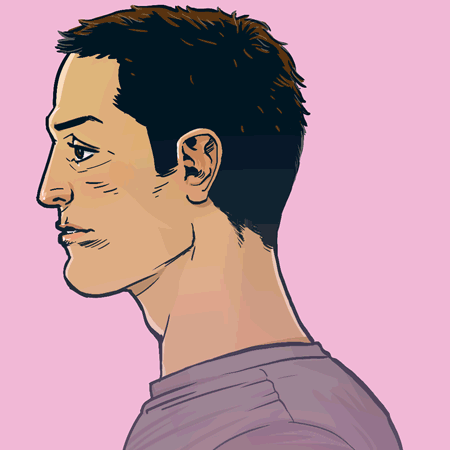
Graphic by Bob Al-Green/Mashable from the article “All The Feels” by Jason Abbruzzese (used with permission)
The acronym ASMR stands for Autonomous Sensory Meridian Response. It is associated not only with pleasurable waves of sensations in the head, but synaesthesia (mixed senses – exp. tasting color), and misophonia (sounds that become unbearable and can cause rage or illness – like a neighbor’s awful music too loud for too long). Popular triggers for this tingling wave of pleasurable sensation are whispering sounds and personal attentive movements. Others can get a soothing buzz reading passages from books which can include that ah-ha feeling of the light bulb going off in their head, zone out on certain types of music, painting and coloring, playing card games repetitively like solitaire and much more. It’s an individualized phenomenon. One person’s pleasurable trigger might drive another person up a wall, or cause no reaction at all in many of us.
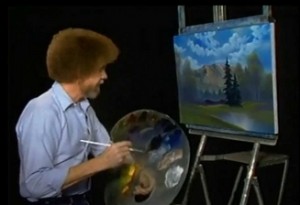 Bob Ross, Painter – Was his success based on ASMR?
Bob Ross, Painter – Was his success based on ASMR?
The science isn’t clear as to what is going on, but the result for most is extreme relaxation and pleasurable sensations. Although there’s nothing sexual about it, it’s sometimes referred to by those that experience it as total ecstasy of the brain. Bliss. Alex Grey art comes to mind as a great illustration of what this sensation looks like. A research paper on ASMR has been published this past March, 2015. If you would like to read more about it, here is a link to the pdf: Autonomous Sensory Meridian Response (ASMR): a flow-like mental state Emma L. Barratt and Nick J. Davis
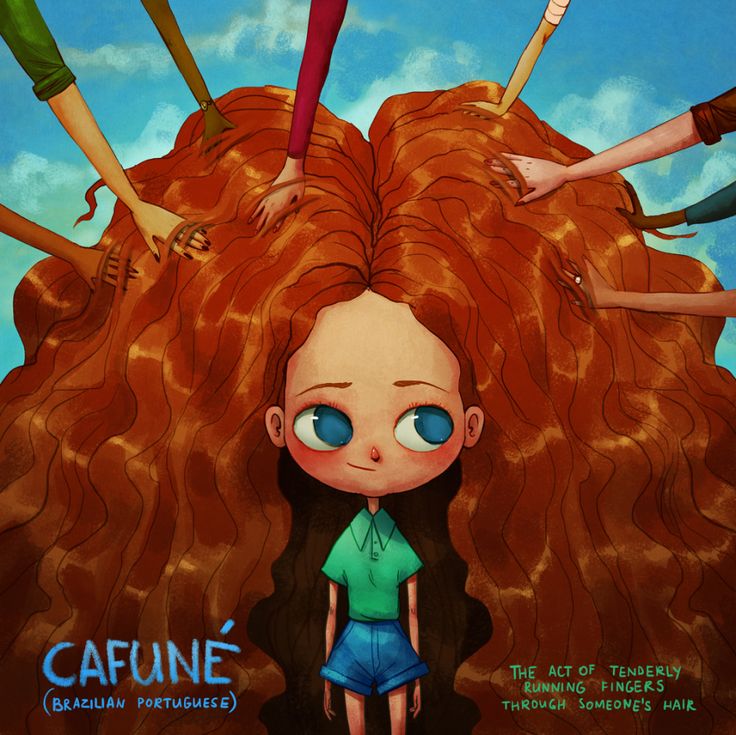
Why do some people experience pleasurable tingling sensations that flow up from their necks in waves toward the crown of the head and others don’t? I’m hoping that question might be answered in part by studying the hands of people who experience these sensations. There are several well known, but not so well studied features in the hands that relate to pleasurable sensations, thrills and sensuality. A number of palmists refer to these features as relating to “sex, drugs & rock-n-roll” behavior and lifestyles. Centuries ago words like debauchery and lasciviousness were applied to these markings along with a raised judgmental brow when glancing back at the client. Few would be willing to give much feedback under those circumstances.
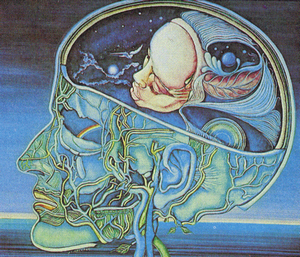
But what if these sensations are a natural part of ourselves as primal beings? What if just as the body can generate the adrenaline needed to handle stressful situations it is equally equipped to decompress and release stress through relaxing, pleasurable sensations? Maybe one reason people are so uptight and stressed out is because we have made many natural and free ways of relaxing, taboo at worst and an indulgence at best. We’ve come to know a good long hug of about twenty seconds or more is healthy and if we surrender into the relaxation it can be very beneficial and release tons of stress.
Below is an outline of a hand illustrating the most important features relating to sensations that can range from a light spread of goosebumps, chills up the spine, to wild fearless thrills. These are not the only ones so if you are an ASMR looking to match your hands to this graphic you may have features that relate to your own individual triggers, but my theory is that these features will be a common characteristic among you.
Just under the middle and ring fingers creating a semi-circle is the crease called the Girdle of Venus. It is often found on very sensitive people and usually creative people who love music, the arts, and are deeply moved by beautiful sunsets. People with this formation have heightened sensations and a keen awareness. It comes in a variety of forms but mainly starts between the index and middle fingers and may be continuous or be broken. It typically ends between the ring and little fingers. Sometimes there are just fragments that do not become a semi-circle. All the variations are associated with different types of preferences toward sensations. They may also relate to our bodies’ capability to feel sensations that others cannot or in a lesser sense. Viktor Frankl wrote in Man’s Search for Meaning about how survival during the Holocaust often depended on the ability to appreciate and find beauty in something so ordinary as a beautiful sunset. Those were often the ones who made it out alive.
“Every tree and plant in the meadow seemed to be dancing, those with average eyes would see as fixed and still.” ~Rumi
On some people, the part of the Girdle of Venus that forms between the ring and little fingers is very straight and angled toward the heart line below. This has become known as the Passion Line and relates to a desire and tolerance for intense sensations. If you’re giving them a back massage, skip the feathery touches, they like the deep tissue type or ask if they’d like you to walk on their back. I actually saw that happen at a recent holistic fair and had the opportunity to read the woman’s hand afterwards and yes she had a very strong and clear Passion Line.
Various types of rings, semi-circular and straight, can form under the index fingers. These are called Empathy Lines. A very clear solid line that cuts across the mount below this finger from the side of the hand and aims up toward the top of the palm near between the index and middle fingers is called a Ring of Solomon, the others are the Empathy Lines. The story behind it being named for King Solomon is that supposedly he looked for this marking in those that built his temples as he thought they had special powers or abilities. I see it on people with very strong connections to others. These markings relate more to identifying with others, feeling what they feel, but they are also on people who are highly sensitive to outside stimuli.
The Via Lascivia comes in a couple formations. Most ancient books describe it as a crease that arches at the bottom of the palm just above the wrist straddling the space between the inner and outer sides of the hand. Recent authors place it more as a crease that is either coming in from the side of the hand and curving down toward the wrist, or rising up from the wrist and continuing up and over toward the outside of the hand on the little finger side. From research that I did about twenty years ago I decided to call a particular form of this line The Star Trek Line because people who had it wanted to go where no one’s gone before. They love adventure and excitement and the sensation of thrills that comes from these experiences. I became very familiar with a type that was common on the young kids free falling from vertical ramp to ramp.
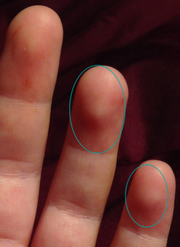
Tear Drops of Isis is one name for the peaked pads on the fingers in Palmistry, although their indications had nothing really to do with the goddess Isis. Others refer to them as droplets. These peaks have more nerve endings crowded together than the rest of the pad allowing there to be a greater and more detailed sense of touch. I often say to people in readings with them that it’s like having eyes in your fingers. You need to pick everything up to see it better. People with these l o v e textures and stroking things. If they are not ASMR they would likely still be experts at creating the videos. Watching the videos, I’ve noticed that nails are frequently used in making the sounds that cause the tingles. There are nerve connections between the nail bed and pad that help to determine how much pressure to apply to what you are touching. This could be another source of sensitivity and sensation.
Much to my delight, when I googled ASMR and Palmistry together I discovered that getting a Palm Reading and watching videos of Palmistry readings are on the list. Often people have told me how soothing and relaxing the reading is and how they enjoy my tracing their lines and pointing out things in their palms with my finger. This falls into the category of personal attention, like getting a haircut or even a medical examination. I’m glad I recommend recording the readings, those that zone out get an extra bonus when they actually hear the reading later. 🙂
Perhaps a large part of the popularity of phrenology in the late Nineteenth Century was the detailed grooming nature of taking meticulous measurements and scrutinizing subtle bumps and grooves. Just thinking about it makes my head tingle.
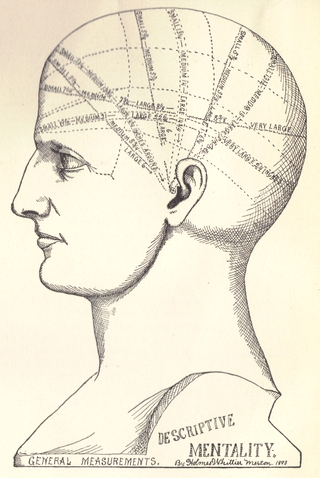
I’m excited about this opportunity to see if ASMR can be determined from hand features. If you think this relates to you and would like to share your hands for my research you are welcome to send me an email (at contact page at my website) or better, visit my Facebook page and send good quality images in a message there. After I have received enough hand samples for a good comparison, I’ll post a follow up with the results.
Thank you for visiting my blog!
in joy and peace, Patti Lightflower www.ireadhands.comHand Analysis of the Future on Facebook
Please like my page on Facebook
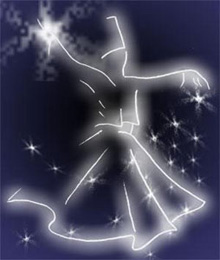

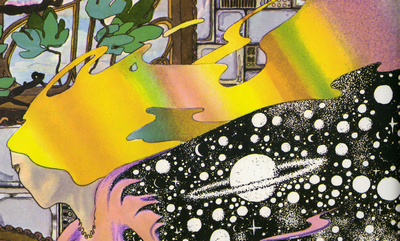

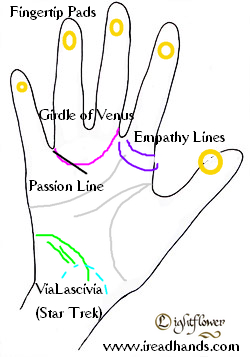
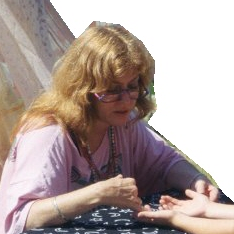
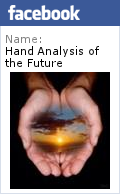
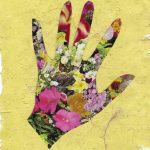
Beautifully written article on a wonderful research topic. It would be fascinating to learn what features, or – more likely – various combinations of features, produce ASMR. Looking forward to part II! 🙂
Excellent article, thank you! I’m also hoping that many people send their hands so we get to see part 2.
Patti – I love the different angles you come into the hands from! So stimulating! (ha ha). I’m ASMR and I have the Via Lascivia, fingerpads, empathy lines and a passion line. I’d love to be included in the research. I regularily experience waves of bliss in response to a variety of stimuli; beauty, sound, touch, colour and story.
Thank you so much Ruth! Waves of bliss – love that! Me too a sort of ‘in love with life feeling’ all over. You know there’s a Facebook group for ASMRs.
ASMR, the Good Feeling No One Can Explain – VICE